In communion with Christ of the Cross
People
In his homily at the funeral Mass, BISHOP GREG O’KELLY SJ highlighted Archbishop Wilson’s deep faith, his love for the Church, his ability to forgive, his pastoral help towards individuals and his desire to strengthen the protection of children and the vulnerable in Church institutions.
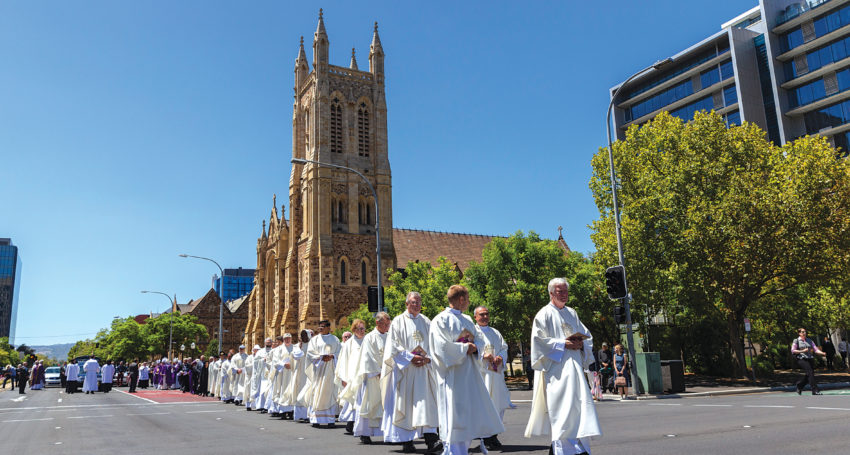
It was my privilege to have served with Archbishop Wilson as his Auxiliary Bishop, living in his house, then frequent interactions with him as a brother bishop in the neighbouring diocese, working with him in the leadership of Caritas Australia, sharing many Bishops Conferences with him, and then being asked in extraordinary circumstances to step in as Administrator and assume his duties.
I was able to witness his daily faithfulness in prayer, the hours he spent in his little chapel, morning and evening. His prodigious reading, several works at a time, with books scattered and lined up all over his room; his delight as a raconteur at the table with guests and as giver of hospitality in his house. He was an avid television viewer, reflecting his love of history and his fascination for the overseas Church and Vatican events and ceremonies; his ideas for the diocese.
Advertisement
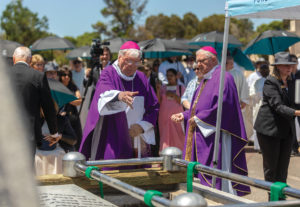 At the beginning of this Mass Philip’s body was blessed with baptismal water, taking us back to the truth that occurred in our lives at that event, when in baptism we were buried in Christ in order to rise with Him, when our bodies assumed the irrevocable dignity of becoming temples of the Holy Spirit, when we were as mortals transformed into the dignity of being members of the Body of Christ in this world. Philip Wilson lived this faith, he stated it in his homilies, and it supported him especially in these last times, as any who visited him could testify. And here he lies in simplicity – his coffin on the ground, no ornament but the cross, the white robe of baptism and the Book of the Gospels, opened.
At the beginning of this Mass Philip’s body was blessed with baptismal water, taking us back to the truth that occurred in our lives at that event, when in baptism we were buried in Christ in order to rise with Him, when our bodies assumed the irrevocable dignity of becoming temples of the Holy Spirit, when we were as mortals transformed into the dignity of being members of the Body of Christ in this world. Philip Wilson lived this faith, he stated it in his homilies, and it supported him especially in these last times, as any who visited him could testify. And here he lies in simplicity – his coffin on the ground, no ornament but the cross, the white robe of baptism and the Book of the Gospels, opened.
The Easter Candle stands at the head of his coffin, symbol of the Resurrection event that transformed all history and will transform each of us and has transformed Philip from death into life. These last years of new circumstances and illness affected him greatly. His reading in his room at Carmelite became minimal and his television viewing quite reduced. His mainstay was his Breviary, the prayer of the Church, his Rosary and his times of personal prayer. In his conversation with visitors he always promised to pray for whatever anyone asked of him. And there was never any word of self pity at what had happened to him. There was a quietness of persistence and a sense that he was in communion with the Christ of the Cross, not denying it, and seeming to accept that he had to embrace the cross he was given, always sure that our most authentic response is to accept whatever God’s will is for us. One left his presence humbled by his lack of what for many others would have been outrage at the unjust events and illness that had overtaken him.
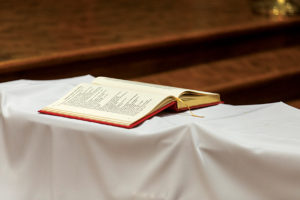 The Gospel on Philip’s coffin lies open at St Luke’s story of the two disciples trudging away from Jerusalem, away from the destruction of their dreams. They are joined along the way by a stranger who listens to them and begins to indicate the meaning of the events they narrated to him. His words made their hearts burn within them. They press him to stay with them and then in the Eucharistic breaking of the bread they recognise him as the Christ. They are transformed by this resurrection experience and hasten back to Jerusalem, back to the Church.
The Gospel on Philip’s coffin lies open at St Luke’s story of the two disciples trudging away from Jerusalem, away from the destruction of their dreams. They are joined along the way by a stranger who listens to them and begins to indicate the meaning of the events they narrated to him. His words made their hearts burn within them. They press him to stay with them and then in the Eucharistic breaking of the bread they recognise him as the Christ. They are transformed by this resurrection experience and hasten back to Jerusalem, back to the Church.
Why did Philip choose this Gospel, as he did? Despite the circumstances, Christ never forsakes us, but will come to us in all the theatres of our lives, along whatever road we are on, no matter the state of our faith or unbelief, and he will often be in the guise of someone else. The stranger gives an interpretation to the events of our lives that renders them a meaning we had not previously noticed but which now makes such sense that it transforms us. And then the breaking of the bread, bread broken, wine poured out, that manifests the foundational presence of Christ in all that happens to us, and which will renew our hearts and send us with new life and purpose back to Jerusalem. And that is why we say in the Requiem liturgy for Philip that ‘for your faithful people, O Lord, life is changed, not taken away’.
Advertisement
Apart from a strong administration of the diocese, there are several features that help define Philip’s episcopacy – his love for the institutional Church and its leaders, his ability to forgive, his pastoral help towards individuals, and his desire to strengthen the protection of children and the vulnerable in Church institutions.
It would be hard to underestimate his love for the Church. He had real confidence in the Church and its leadership, frequently expressing his conviction about the Holy Spirit guiding it and the Holy Father. That conviction kept him unwavering in his support and confidence in it. And for the forthcoming Plenary Council, an event that should be momentous for the Australian Church, and whose origins were in Philip’s intervention in Bishops Conference when he proposed, against opposition, that we embark on this course, to have the Church consider in representative solemn assembly what is its mission in the Australia of these times.
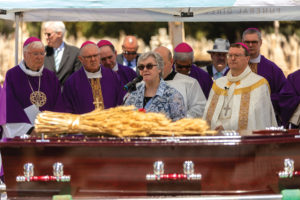 St Thomas More, lawyer and Chancellor of England and martyr, was a hero to him because among other virtues More showed, as Philip once wrote prophetically, ‘a really deep loyalty to the Church in very difficult circumstances’. Philip once gave a lapidary description of the Church in action, succinct and descriptive. He wrote: ‘My loyalty to the Church is about loving the reality of Christ present in the world, in the midst of this community that is limited by the reality of the humanity that is so much part of it’. The Church in its purity is, he wrote, ‘a vehicle of life and love’, but its life is made up of women and men who like himself are ‘marked by the difficulties of human failure and weakness and sinfulness’.
St Thomas More, lawyer and Chancellor of England and martyr, was a hero to him because among other virtues More showed, as Philip once wrote prophetically, ‘a really deep loyalty to the Church in very difficult circumstances’. Philip once gave a lapidary description of the Church in action, succinct and descriptive. He wrote: ‘My loyalty to the Church is about loving the reality of Christ present in the world, in the midst of this community that is limited by the reality of the humanity that is so much part of it’. The Church in its purity is, he wrote, ‘a vehicle of life and love’, but its life is made up of women and men who like himself are ‘marked by the difficulties of human failure and weakness and sinfulness’.
He was certainly called to experience the limitation of the Church in its humanity. Those who knew him well have reflected on his ability to forgive those who had hurt him, and he was especially moved when co-religionists made their criticisms public, something only those close to him would have seen.
He admitted hurt but expressed no rancour; he didn’t walk away from them. His comment would reflect his view about the limitations of our humanity, and he would say “that’s human nature”. In the judgment overthrowing his conviction Judge Roy Ellis commented admiringly on this noble quality in Philip. He described Philip as an “intelligent and articulate witness who did not attempt to blacken the name of his accuser in defence.”
Individuals in distress who approached Philip for pastoral care found him to be warm, compassionate and devoted to them. These were attributes he had difficulty in communicating publicly until recent years. It was a question of his style that changed as he became more involved with the parish renewal programs, spending whole days with the people of a parish, they opening up to him and he to them.
Heads of other churches, and leaders of the Islamic and Jewish communities especially, appreciated all that Philip did to strengthen good relations on an interfaith basis. He did this through his involvement with them personally, through organising prayer vigils in the Cathedral at the time of some disaster, and through hospitality at the Archbishop’s House, inviting them there for major feasts in their religious calendars, such as the end of Ramadan. The establishment of the Holocaust Museum in a Church building next to this Cathedral, an initiative of Philip’s, is a remarkable example of this outreach.
There were other significant ven-tures achieved by Archbishop Wilson in his administration, such as the stabilising of diocesan finances, but outstanding among them was his work for the protection of children. Newly ordained as a bishop, Philip threw himself into the challenge of addressing the sexual abuse crises that were besetting the Wollongong diocese. In the few short years he was there he gave great energy to this task, even threatening to resign if the Holy See did not accept his decision to suspend a sexually abusing priest from all ministry. He earned a title he was proud of, that of ‘the healing bishop’ for his handling of child abuse scandals. When he left Wollongong the mayor of the city said that he “played a leading role in restoring the credibility of the Catholic Church here”. This appraisal is so ironic when one contrasts it with the disgraceful and insulting treatment he was later to receive from the media here and elsewhere.
As Archbishop of Adelaide, he again addressed the issue of child abuse, working to bring interim redress to the survivors of abuse and their families and to achieve settlements more speedily. This was all well before the Royal Commission. His reputation as a healing bishop spread widely. He was consulted in Rome more than once. Through Cardinal Timothy Dolan, Archbishop of New York, he was invited in 2002 to address a special session of the United States Conference of Catholic Bishops, as that group struggled to respond to the wave of clerical abuse cases. Philip was described by their spokesman as “wise in matters of faith, skilled in diocesan leadership and experienced in dealing with the scandal and pain and misfortune that clerical crimes bring upon bishops, the people and the Church”. Philip would say, and all the bishops in Australia would agree, that despite what happened to him, and how his name was traduced, the Church must continue to do all it can to affirm and support survivors of abuse if it is to be faithful to its mission and must do all it can in human terms to ensure that such crimes do not occur again.
In this Archdiocese Philip Wilson established a Child Protection Council, the first in Australia. He established in the archdiocese the Police Check Unit, again the first in Australia. He mandated police checks for all parish and diocesan volunteers, a task thought at the time to be too formidable in the scope and numbers involved to implement. He initiated auditing procedures in schools and parishes to ensure safety protocols for the protection of children. This care for victims stayed with him until the end, when after his conviction and before his sentencing he submitted his resignation with the words “there is just too much pain and distress being caused by my maintaining the office of Archbishop of Adelaide, especially to the victims of Fr Fletcher”.
And so we come to bury this eighth Archbishop of Adelaide, the dedicated and faithful servant of God and his people, a man of integrity and leadership, as the Church notice described Philip. He goes to rejoin his so beloved parents and his younger brother Paul. Like the disciples at Emmaus, the Lord has joined him on his way and has opened all the Scriptures to him. In 2010, before the trials began, Philip wrote: “The big test for all of us is not what people think here or what we have to go through here but what happens to us when we arrive before the Lord and have to give an account of our life and our stewardship.” To the Thomas More Society he said his hope was that he “and all the people who have been part of my life”, which included those opposed to him, would be able to “meet merrily in heaven”.
Related Story
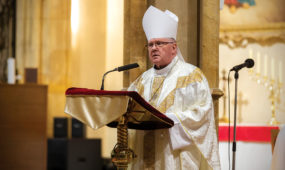 Obituaries
Obituaries
A life of surprises
Philip died on the Second Sunday of Ordinary Time, and the Gospel that day was the call of the disciples. Two of them had followed Jesus who turned and asked them, ‘what do you want?’ ‘Lord,’ they replied, ‘where do you live?’ ‘Come and see,’ said Jesus. And they went and stayed with him the rest of that day.
May Philip the priest and pastor who searched daily for the Lord, and who led this Church in difficult times, now be in that sacred presence, in a day that knows no end, in the peace of the Risen Christ whom he served so faithfully and so well. Dearest Lord, this Church thanks you for Philip as its pastor and into your loving and merciful hands we now commend his spirit. Amen. Amen.


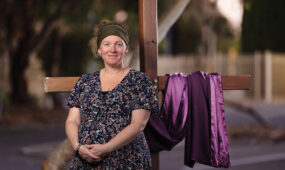
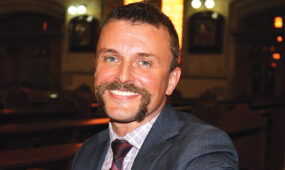
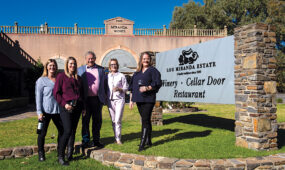
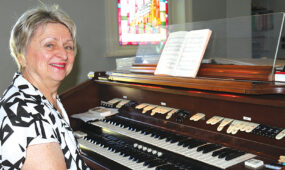

Comments
Show comments Hide comments